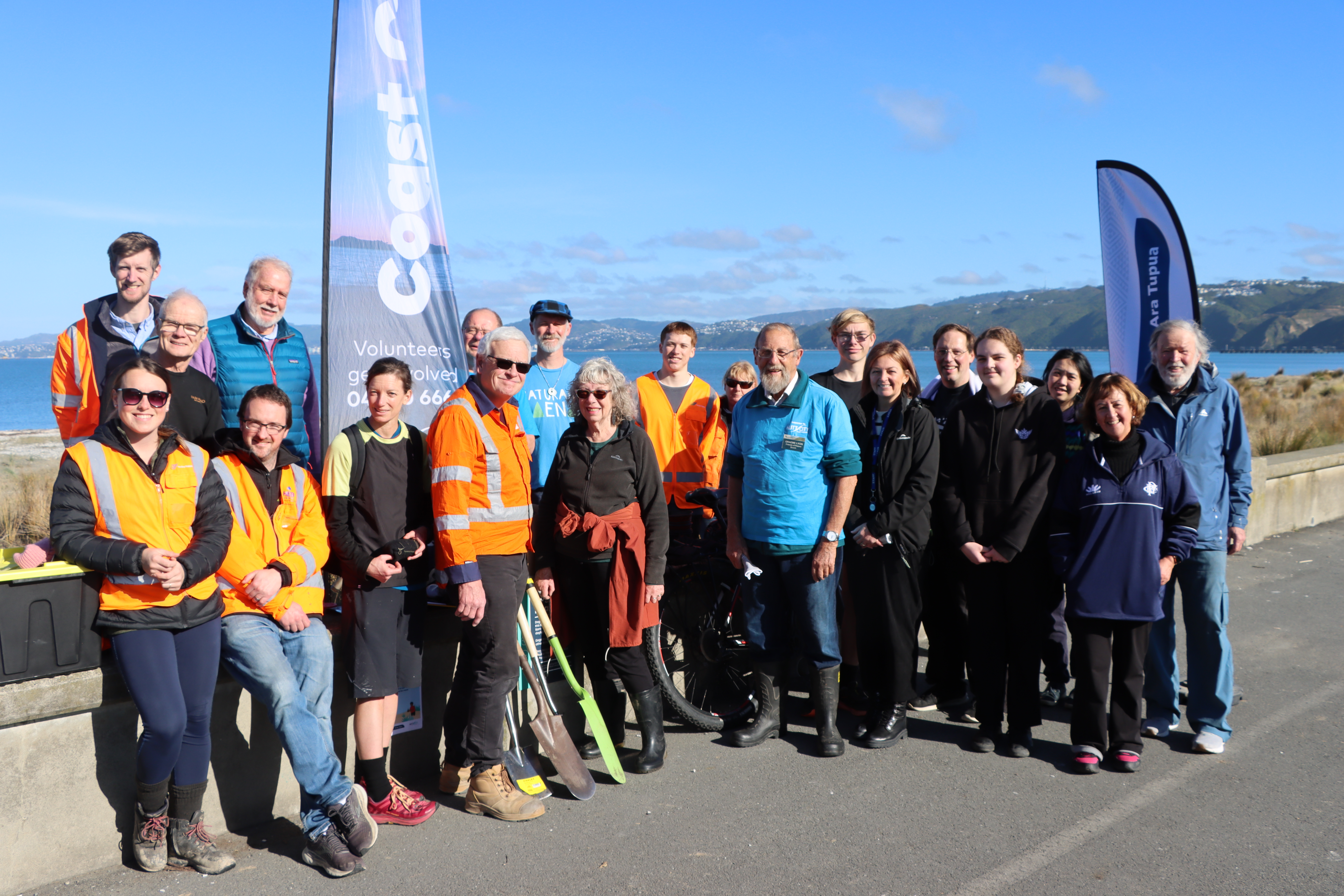25 July 2024
If you frequent Pito-One Beach, chances are, you've had the pleasure of seeing the several thousand plants that Friends of Petone Beach (FoPB)(external link) have planted over the last 19 years. These have contributed to protecting the environment while also growing a natural barrier for coastal erosion and creating habitat for native wildlife.
Working together towards a living beach with a dune ecosystem, FoPB meet regularly on the first and third Thursday morning of each month, providing local residents, organisations and schools the opportunity to come along and learn about the beach environment through planting and maintenance.
On Thursday 25th July the project team got to work planting 500 native grasses and shrubs along the eastern end of Pito-One (Petone) Beach with FoPBand motivated students from Hutt Valley High and Sacred Heart Petone. The group made quick work on planting along the foredune, restoring and enhancing the mauri of dunes along the beach.
The plants used for the restoration of the precious foreshore are selected to match original vegetation including pingao - a golden sand plant found only in New Zealand, spinifex - the silvery sand grass, flax and wiwi rushes. Coastal foredunes are the most dynamic part of a dune system. They occupy the drier raised coastal sand where dry beach sand is moved inland by wind and trapped by plants to create and build the dunes. Natural sand dunes play a vital role in protecting our beaches, coastline and coast development from hazards such as erosion, flooding and storm damage.
It was a great opportunity for the project team to support the work that community volunteers have been doing over a number of years, while talking to locals about the progress of Te Ara Tupua and sharing the benefits to follow upon completion.

